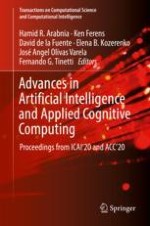The book presents the proceedings of two conferences: The 22nd International Conference on Artificial Intelligence (ICAI’20) and The 4th International Conference on Applied Cognitive Computing (ACC’20). The conferences took place in Las Vegas, NV, USA, July 27-30, 2020, and are part of the larger 2020 World Congress in Computer Science, Computer Engineering, & Applied Computing (CSCE'20), which features 20 major tracks. Topics include: deep learning; neural networks; brain models; cognitive science; natural language processing; fuzzy logic and soft computing (ICAI) and novel computationally intelligent algorithms; bio inspired cognitive algorithms; modeling human brain processing systems (ACC); and more. Authors include academics, researchers, and professionals.
Presents the proceedings of two conferences as part of the 2020 World Congress in Computer Science, Computer Engineering, & Applied Computing (CSCE'20);Includes the tracks: artificial intelligence and applied cognitive computing;Features papers from the 22nd International Conference on AI (ICAI’20) and the 4th International Conference on Applied Cognitive Computing (ACC’20).
